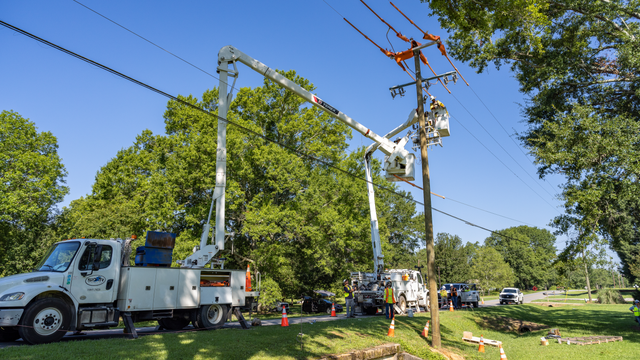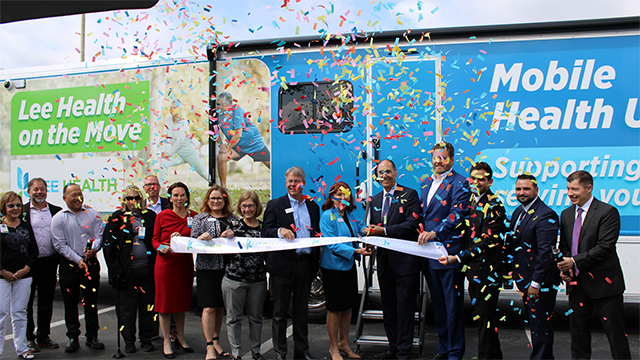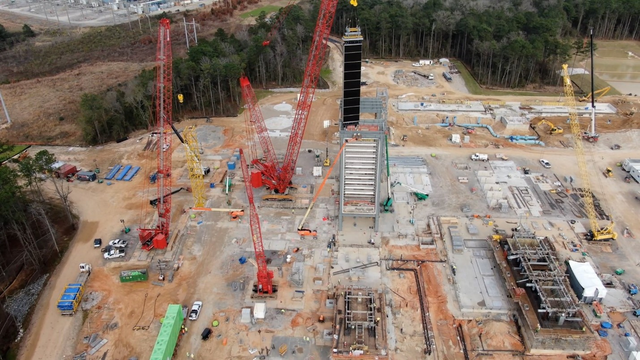When the Environmental Protection Agency (EPA) revealed its Clean Power Plan, nuclear energy advocates were greatly puzzled – the proposal called for crediting only 6 percent of existing nuclear power output toward a state’s carbon emissions improvements. That figure has resulted in a wave of protest during the comment period, a point EPA has acknowledged.
“The question remains as to whether nuclear will even be considered in the overall Clean Power Plan as a way to address some of EPA’s proposed building blocks,” said Mark Gake, Chief Engineer for Nuclear Projects, Black & Veatch. “So whether we get a resolution of that will dictate to a large extent what nuclear’s role will be in the future.”
Gake was speaking at the two-day Greenhouse Gas Strategic Forum sponsored by Black & Veatch. The conference, held in Kansas City, Mo., attracted nearly 100 utility executives and industry leaders.
Since the release of the Clean Power Plan, EPA has received millions of comments. EPA Administrator Gina McCarthy has publicly acknowledged two areas of reconsideration in the proposed rules – how it values nuclear power plants, and how it values new natural gas plants. The comment period was extended to Dec. 1.
Gake presented an update of the nuclear plant situation in the United States at the forum, particularly in light of recent plant retirements.
“The U.S. has lost 3,600 megawatts of greenhouse gas-free electricity over the past few years, as four plants have been retired,” Gake said. “There are now 100 nuclear units operating in the United States. Nuclear continues to supply about 19 percent of the electrical needs in the U.S., and these plants provide 64 percent of the GHG-free electricity in the country.”
On a positive note, he said there are four new units under construction in the U.S., along with one restart. The five units will provide a combined 5,200 MW of new nuclear generated power. Still, the industry has many issues to overcome, he said.
“Existing nuclear plants are more challenged economically than ever before,” Gake said. He noted that one utility had five nuclear plants that failed to clear market prices at the 2017 capacity auction, meaning they will not receive capacity payments from their ISO. “If you don’t get these payments, you may be forced to shut down.” He noted that several other nuclear plants were “on the bubble.” Present electricity markets do not put any extra value on reliable baseload generation even though it is needed to stabilize the grid.
Boosting Capacity at Existing Nuclear Power Plants
Extending nuclear energy capacity is possible at many plants, Gake said.
“If utilities can increase existing nuclear capacity or install new nuclear capacity, we can still make an impact to the overall GHG emission in the U.S.,” he said. “Nuclear energy clearly could play a large role, but we still need clarity in the plan.”
Gake said extended power uprates can add more than 100 MW of new electricity generation for each unit. “That is a significant addition of clean electricity from a plant that is already sited and built,” he said. “Some power uprates at various plants were completed years ago. Several were started at other sites, then halted. Those could be completed and drive the improvements for those states.”
Gake also talked about the future of small modular reactors (SMRs), which are intended to be a solution to the high cost of new nuclear construction. He said there have been two rounds of funding from the U.S. Department of Energy. “But development is slow because there are no buyers at this point. SMRs are not a proven commercial solution yet.”
Future Flexibility in Nuclear Energy
Gake noted that nuclear energy has always been considered a baseload generator. But just as some coal plants are having to adjust in their role, he predicted nuclear will also have to become more flexible. “Germany is leading the world in ‘load following’ – that is, raising and lowering nuclear power output to counter-balance fluctuations in renewables.”
While not necessarily recommended, he said nuclear plants can cut output to as much as 50 percent capacity in order to follow loads from other sources.
As far as the role for nuclear energy by 2030, which is the target date for the Clean Power Plan, he predicted that some existing nuclear plants will have their operating licenses extended beyond 60 years. As of the end of October, the U.S. Nuclear Regulatory Commission had granted 20-year renewals for the original 40-year operating licenses for 72 reactors. However, operation beyond 60 years will require additional licensing, along with component reviews and potential replacements that may prove uneconomical, he said.
Besides the five new nuclear plants under construction in the U.S., Gake said another four have a possibility of becoming reality by 2030. He said the U.S. will begin replacing old nuclear plants with new nuclear by then, and that China, Russia and India will continue to lead the globe in new nuclear construction. The international drivers for new nuclear units will continue to be the climate issue and fuel diversity.
“We’ll likely see some SMRs in operation by 2030, both to replace retired fossil fuel plants and to support renewables.” He said some new Generation IV nuclear plants will be under construction by this time. In addition, he said there could be some fusion plants in the pilot testing stage.
“The bottom line is fossil fuels will not last forever,” Gake said. “Nuclear can play a long-term role for greenhouse gas-free electricity.”
Subject Matter Expert
Mark Gake: GakeMA@bv.com





